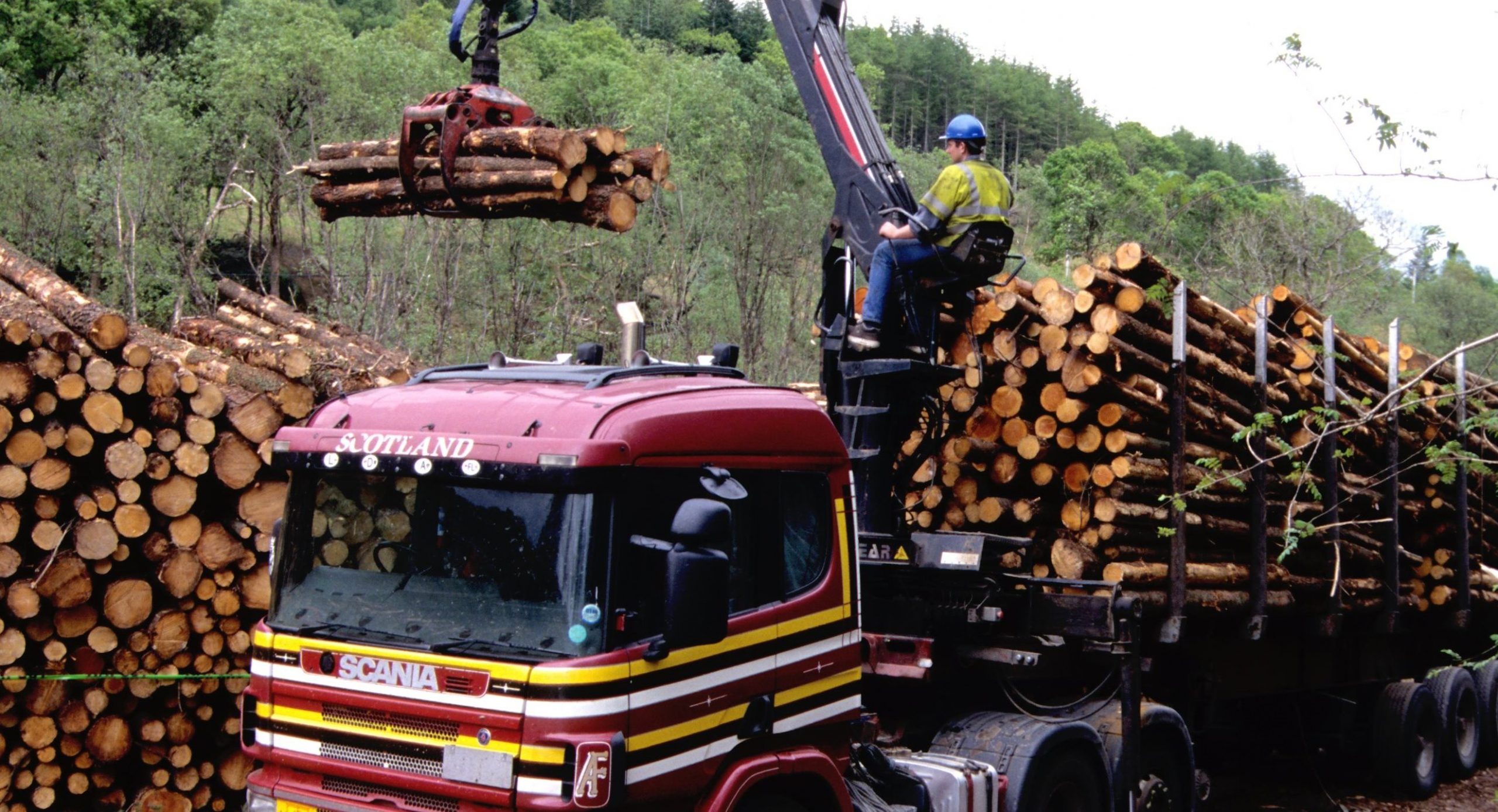Ramorum disease does not affect timber quality if the trees are felled quickly enough after infection is detected. Larch, the most affected species, is widely grown in the United Kingdom for its timber.

However, the movement and handling of wood from forests affected by Phytophthora ramorum present a risk of spreading ramorum disease if strict biosecurity precautions are not taken to minimise it. Accordingly, regulations exist to ensure that these precautions are taken, by means of a licensing system, during commercial forestry and timber operations at certain forest sites. These are sites which are subject to a Statutory Plant Health Notice (SPHN) requiring trees to be felled for disease control purposes.
This helps to ensure that the owners of diseased larch crops can still realise an income from them where the trees are of saleable size and quality.
With one exception, all movements in the United Kingdom (UK) of P. ramorum-affected wood from a forest, and some subsequent movements of the affected material from a sawmill or other wood-processing site, require a movement licence from the appropriate forestry authority.
The exception is movement of affected wood in the South-West Scotland P. ramorum Management Zone – further information is available from Scottish Forestry.
In addition, P. ramorum-affected wood may only be moved to a facility which holds a processing licence to handle it.
Licences are issued to haulage and processing operators who can demonstrate that they have put in place and are practising the required biosecurity measures.
‘Phytophthora-affected wood’ means:
Where P. ramorum-affected trees have been felled to comply with a Statutory Plant Health Notice (SPHN), owners and managers can only move the wood and co-product, and sell it for further milling or processing, subject to the licence conditions.
Round wood from uninfected sites, and the movement of square-sawn timber cut from affected wood, are unrestricted.
The decision matrix in this document describes the situations where SPHNs are required or not required, and describes the associated mitigation measures required to reduce the risk of disease spread.
Movement and processing licences for Great Britain are issued by the Forestry Commission. The Commission issues licences on behalf of Natural Resources Wales and Scottish Forestry, which are the forestry authorities for Wales and Scotland, where the movement or processing takes place in Wales or Scotland.
Licences for Northern Ireland are issued by the Department of Agriculture, Environment & Rural Affairs.
The risk assessment and licence system are kept under review and may be updated from time to time.
New European Union (EU) regulations, collectively known as Smarter Rules For Safer Food (SRSF), and which include the Plant Heath Regulation (PHR) and the Official Controls Regulation (OCR), were applied to the UK forestry sector on 14 December 2019.
They replace legislation that covered registration as a Registered Forestry Trader (RFT) with new legislation relating to registration as a Professional Operator.
Under the new regulations, commercial movements of certain types of regulated wood, wood products and bark within Great Britain, and to relevant protected zones, must be accompanied by plant passports. These include:
If you, or your business, are involved with the movement of plant health-regulated forestry material, you are advised to check whether you are affected by the new regulations. If you are affected, you must register as a Professional Operator. See www.gov.uk/guidance/register-as-a-professional-operator-to-issue-plant-passports for further information.
Next – Section 10: Treatment of sawn wood with residual bark